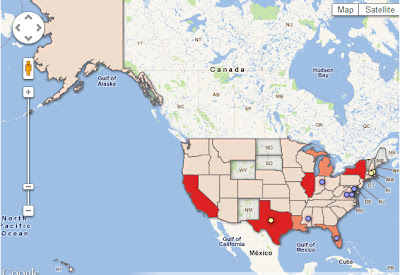From the US Census Bureau:
The U.S. Census Bureau today announced revisions to its public release schedule for local statistics from the American Community Survey and results from the Supplemental Poverty Measure. These data have been delayed because of the recent lapse in federal funding.
2010-2012 American Community Survey — The Census Bureau plans to release American Community Survey statistics derived from data collected from 2010 to 2012 on Nov. 14, (originally scheduled for Oct. 24). Embargo subscribers will have access to the statistics beginning Nov. 12. The estimates will cover all geographic areas with populations of 20,000 or more. For the first time, comparison profiles will be available for the three-year statistics. These profiles will permit users to compare changes over two non-overlapping three-year periods (2007-2009 versus 2010-2012).
The American Community Survey provides a wide range of important statistics about all communities in the country. The American Community Survey gives communities the current information they need to plan investments and services. Retailers, homebuilders, police departments, and town and city planners are among the many private- and public-sector decision makers who count on these annual results.
Ever since Thomas Jefferson directed the first census in 1790, the census has collected detailed characteristics about our nation’s people. Questions about jobs and the economy were added 20 years later under James Madison, who said such information would allow Congress to “adapt the public measures to the particular circumstances of the community,” and over the decades allow America “an opportunity of marking the progress of the society.”
2008-2012 American Community Survey — The Census Bureau plans to release the five-year American Community Survey statistics covering 2008-2012 on Dec. 17, (original release date was Dec. 5). These statistics are available for all areas regardless of population size, down to the block group. No embargo period will be offered for these statistics.
American Community Survey Public Use Microdata Sample Files — The Public Use Microdata Sample files for the 2012 American Community Survey one-year statistics will be released on Dec. 17, (original release date was Oct. 24); the files for the three-year statistics will be released on Feb. 6, 2014 (original release date was Dec. 5); the files for the five-year statistics will be released on March 6, 2014 (original release date was Jan. 23).
2012 Supplemental Poverty Measure — The third annual report from the Census Bureau describing research on this measure, which complements, but does not replace, the official measure will be released on Nov. 6 (original release date was Oct. 30). The report compares U.S. 2012 supplemental poverty statistics with 2012 official poverty statistics for numerous demographic groups. In addition to the national-level statistics, the report presents supplemental poverty estimates for states using three-year averages (2010-2012). It also compares national 2011 supplemental poverty statistics with 2012 supplemental poverty statistics and examines the effect of excluding individual benefits and necessary costs.
Other Products — The Census Bureau has also posted anticipated dates for the remaining statistical data products expected to be released in 2013. To view the full revised release calendar through the end of 2013, visit the Census Bureau’s release calendar.






